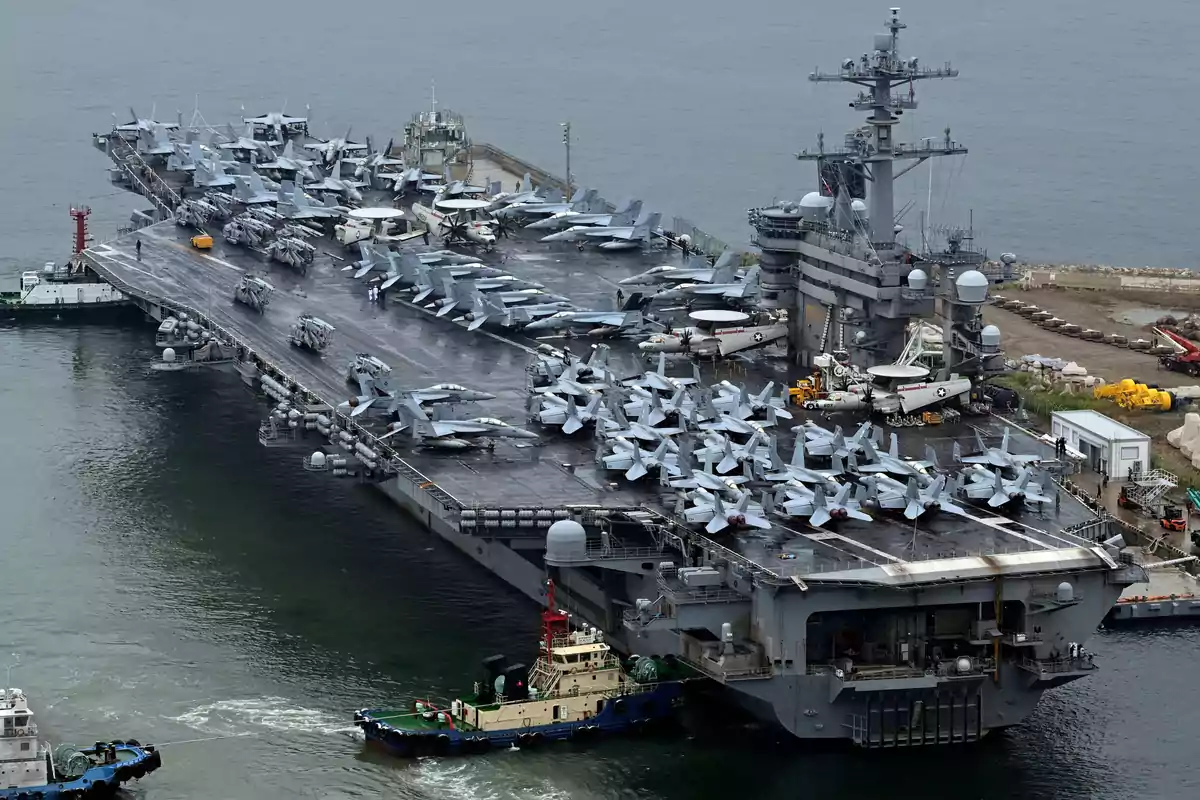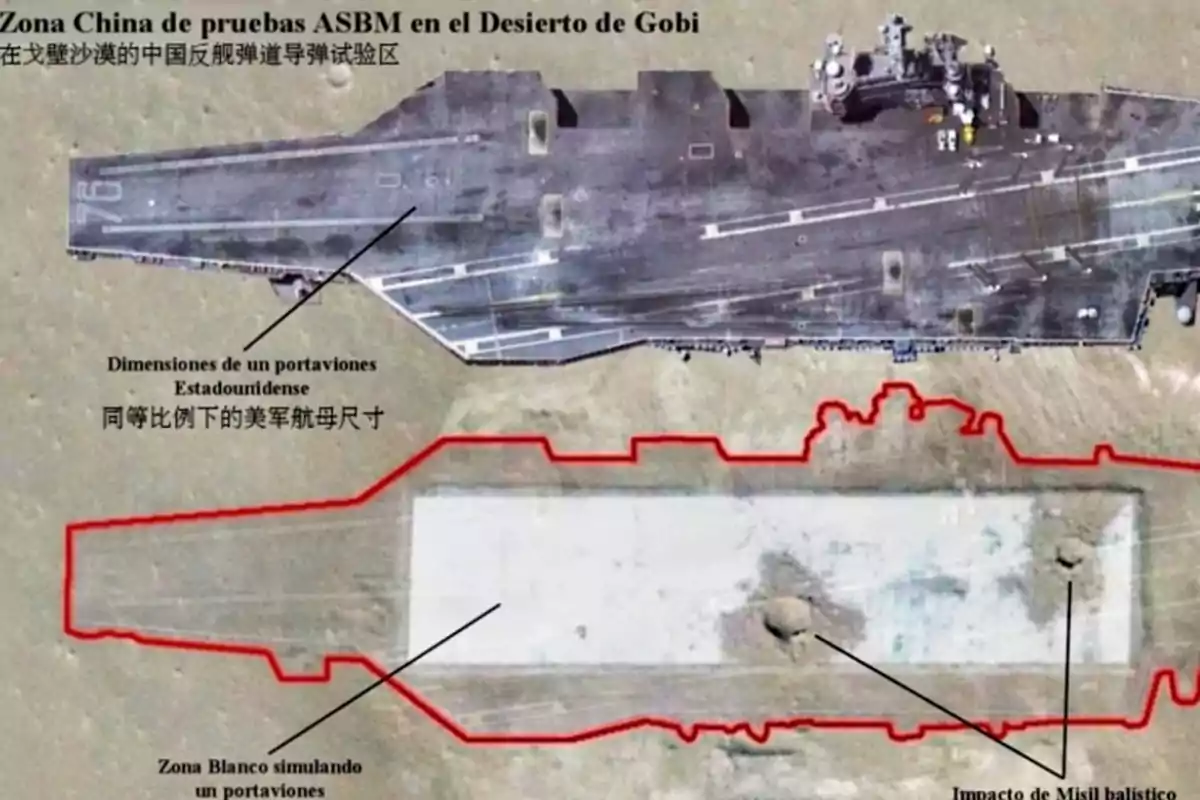
China built an artificial United States fleet to practice missile strikes
The Chinese army built replicas of the United States Navy in certain desert regions to rehearse its attacks, preparing for a potential war
In remote regions of the Xinjiang desert, Chinahas built full-scale replicas of United States warships, including Gerald R. Ford-class aircraft carriers and Arleigh Burke-class destroyers.
These structures, informally called "desert warships," are part of a sophisticated testing area used to rehearse anti-ship ballistic missile strikes, such as the well-known DF-21D and DF-26, nicknamed "carrier killers."
These facilities were discovered through satellite images around 2021, when detailed models of United States warships were observed in deserts like the Taklamakan and the Gobi.

The purpose of this strategy.
The main purpose of these drills is to support the development and accuracy of medium- and long-range missiles designed to destroy enemy ships.
These missiles are a key part of China's anti-access and area denial strategy, whose objective is to hinder or prevent military intervention by foreign powers, especially the United States, in sensitive regions such as the South China Sea or the Taiwan Strait.
The level of detail in the replicas indicates that this is not just about practicing strikes against large floating structures. For example, the copy of the USS Gerald R. Ford includes catapult tracks, the carrier island correctly positioned, and dimensions that very precisely reflect the original design.
This suggests that the exercises are designed to simulate attacks against specific ship systems, such as radars, aircraft launch systems, or command centers.

China prepares for a potential war.
In addition to missile tests, the "desert warships" are used for integrated exercises by the People's Liberation Army Rocket Force (PLARF), missile operators, and electronic warfare specialists.
This advanced training capability in a controlled environment would significantly improve China's preparedness for potential high-intensity naval conflicts.
The existence of these facilities is not new. Since at least 2013, rudimentary models of aircraft carriers have been detected in the desert, some of which showed impacts after being used in live-fire exercises.
In recent years, the complexity and number of replicas have grown significantly, now also including simulations of United States military bases in Japan and the Pacific, runways, and radar stations.

The implications of these developments are multiple:
- They reflect the growing rivalry between China and the United States, and Beijing's desire to deter United States intervention in regional conflicts, especially those related to Taiwan.
- They may motivate the United States and its allies to strengthen their missile defenses and stealth capabilities, with the goal of protecting their key naval assets in the Indo-Pacific region.
- They serve as a propaganda tool, both internally and externally. Although they may have symbolic value within China, their visibility through satellite images also sends a clear strategic message to the rest of the world.

More posts: